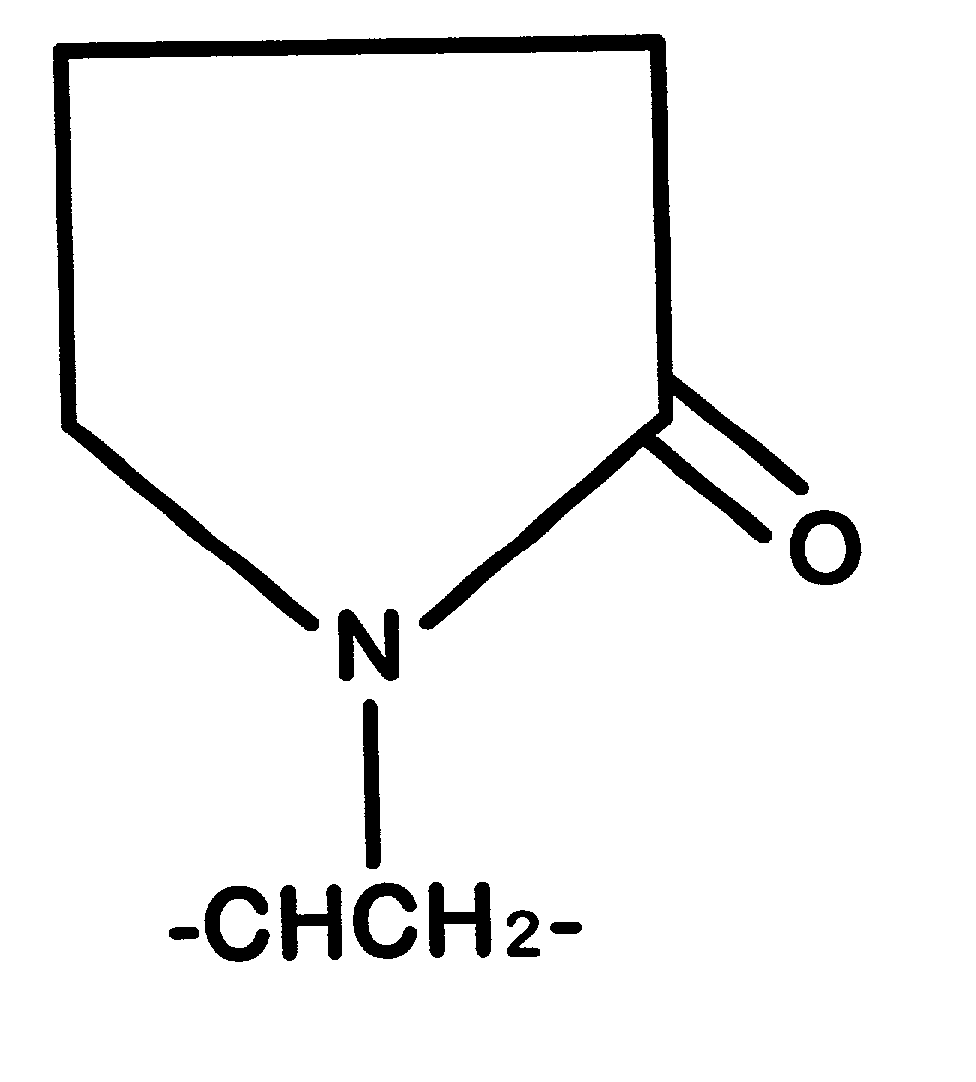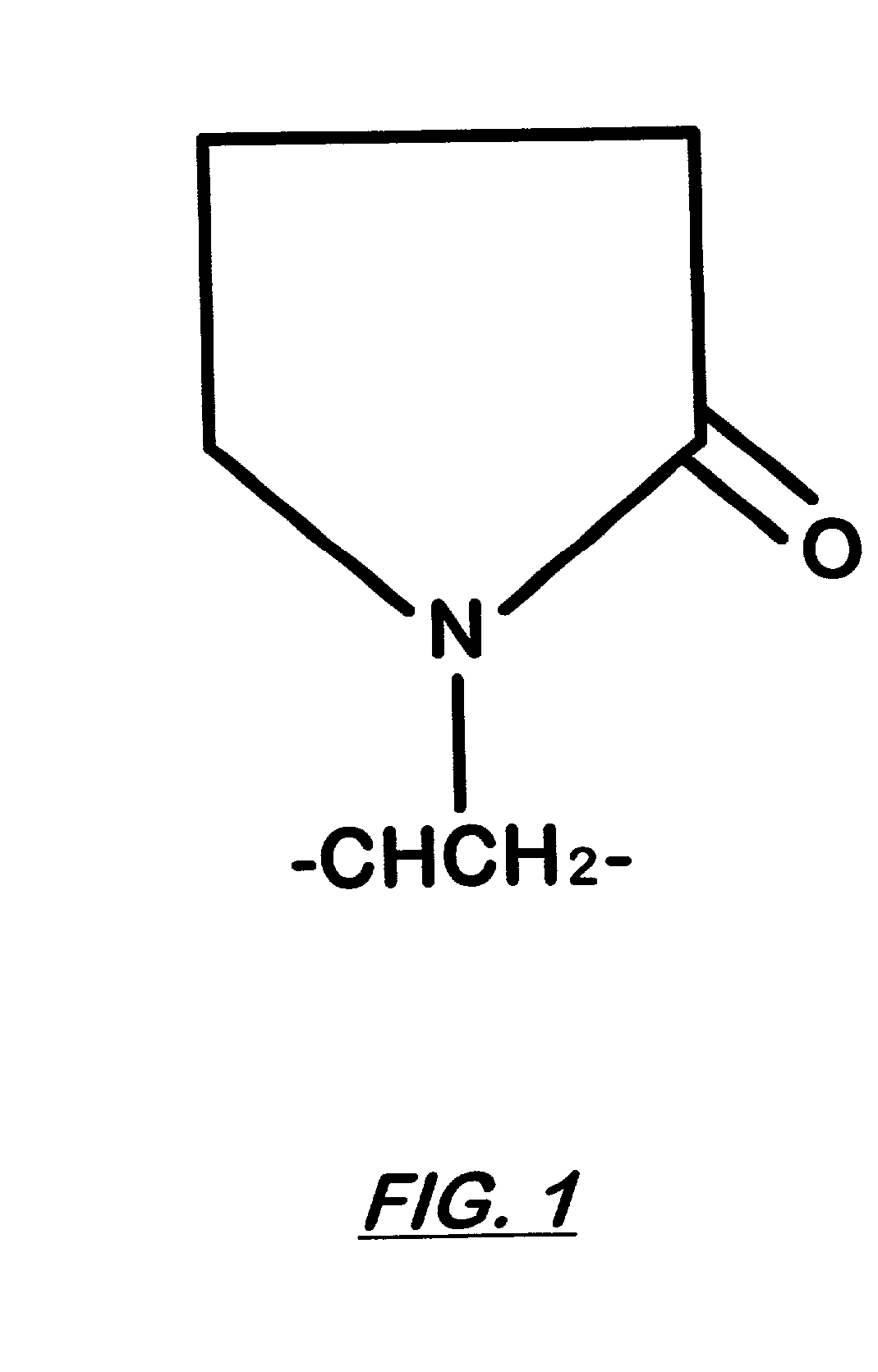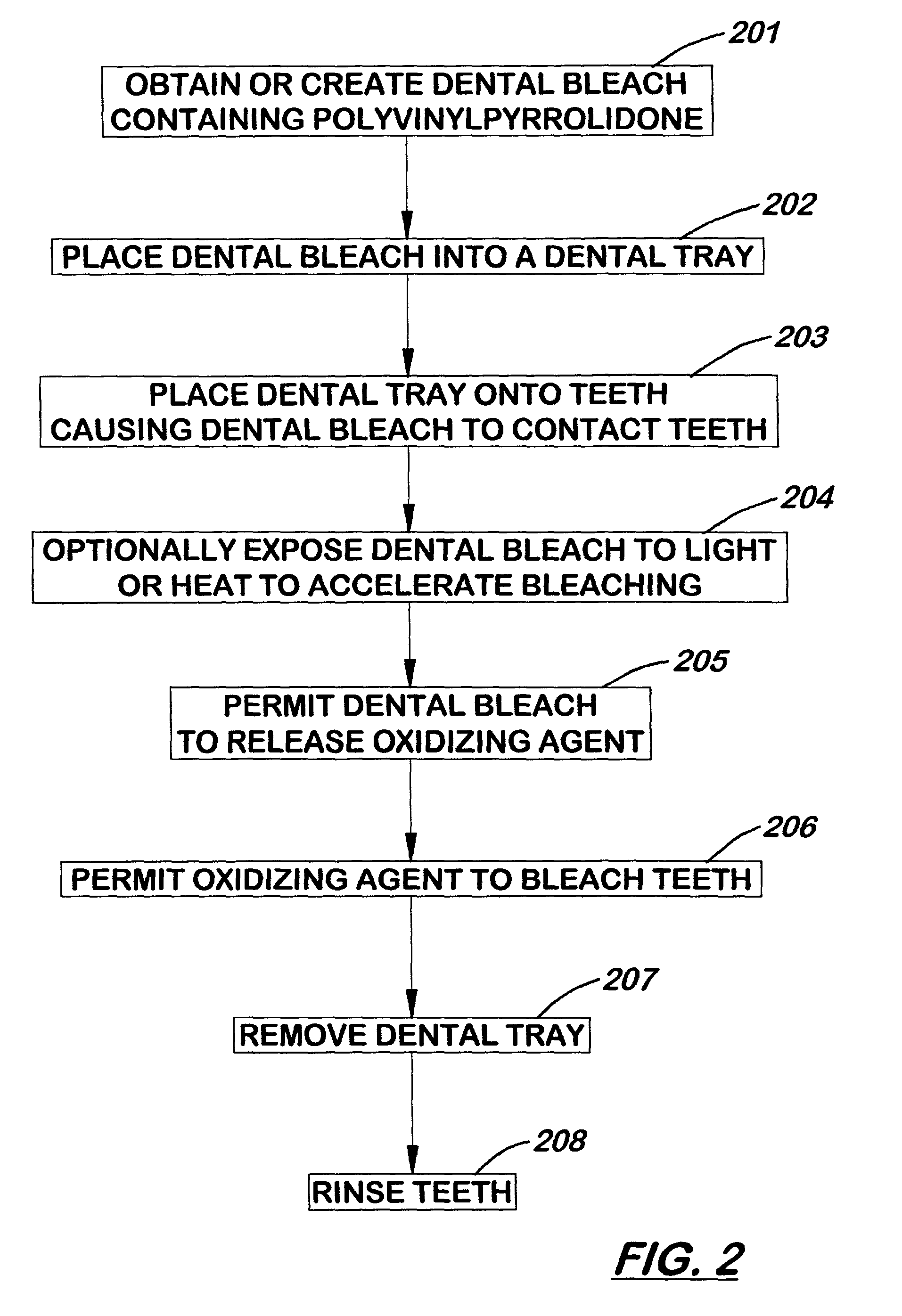Enamel-safe tooth bleach and method for use
- Summary
- Abstract
- Description
- Claims
- Application Information
AI Technical Summary
Benefits of technology
Problems solved by technology
Method used
Image
Examples
Embodiment Construction
[0049] A. Materials for Use in Dental Bleach
[0050] A preferred dental bleach may have several components including a bleaching agent, a basic agent, a thickening agent, a flavoring agent, a desensitizing agent, and others. At a minimum, a dental bleach of the invention will include a bleaching agent, a liquid component, and a thickening agent, but in alternative embodiments of the invention, other ingredients may be included such as those already listed.
[0051] 1. Bleaching Agent
[0052] Suitable bleaching agents of the invention will include any material capable of releasing an oxidizing agent such as free radical oxygen ions for contacting teeth and removing stains therefrom via an oxidation process. Most preferred bleaching agents at this time are peroxides, including but not limited to hydrogen peroxide, carbamide peroxide, sodium perborate, and sodium percarbonate. Other peroxides and other oxidizing agents and bleaching agents may be utilized in addition to or in substitution of ...
PUM
| Property | Measurement | Unit |
|---|---|---|
| Fraction | aaaaa | aaaaa |
| Fraction | aaaaa | aaaaa |
| Fraction | aaaaa | aaaaa |
Abstract
Description
Claims
Application Information
 Login to View More
Login to View More - R&D
- Intellectual Property
- Life Sciences
- Materials
- Tech Scout
- Unparalleled Data Quality
- Higher Quality Content
- 60% Fewer Hallucinations
Browse by: Latest US Patents, China's latest patents, Technical Efficacy Thesaurus, Application Domain, Technology Topic, Popular Technical Reports.
© 2025 PatSnap. All rights reserved.Legal|Privacy policy|Modern Slavery Act Transparency Statement|Sitemap|About US| Contact US: help@patsnap.com



